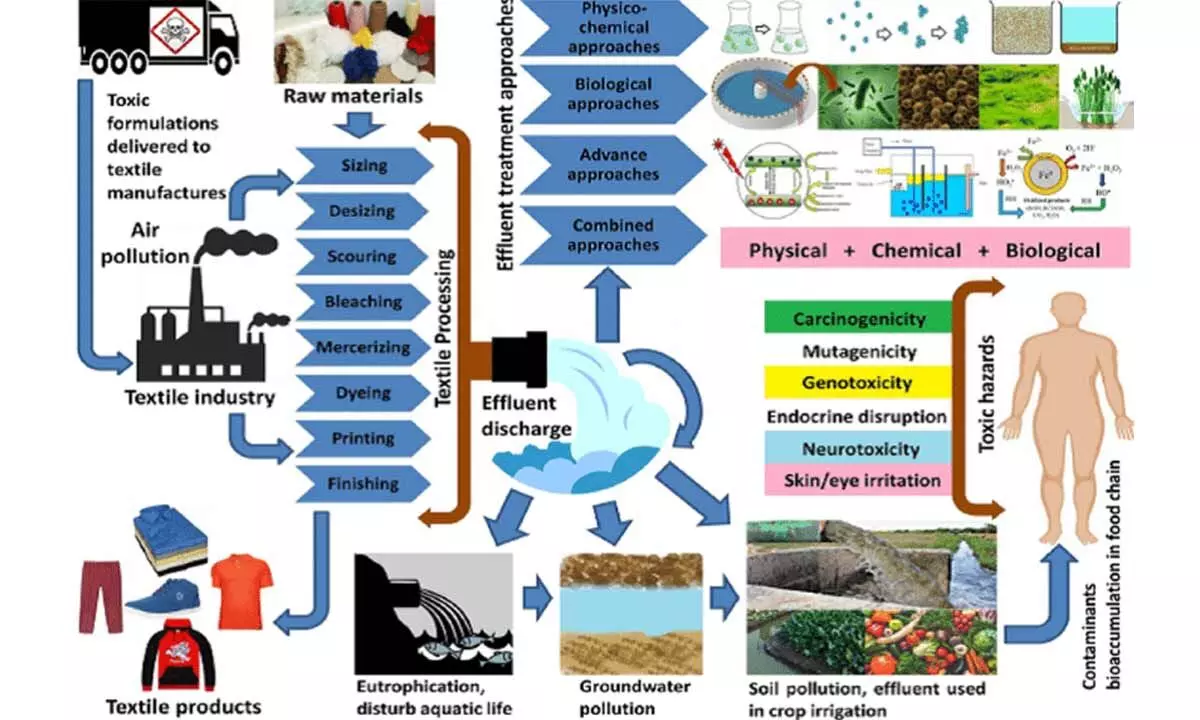Researchers develop two-step process for treating textile wastewater

Researchers develop two-step process for treating textile wastewater
Researchers at the Indian Institute of Technology (IIT), Jodhpur, have developed a two-step process to treat textile wastewater before discharging it into natural water bodies.
New Delhi: Researchers at the Indian Institute of Technology (IIT), Jodhpur, have developed a two-step process to treat textile wastewater before discharging it into natural water bodies.
The treatment includes an electrochemical processing of the sample in the first step, followed by a real-time photocatalytic degradation using novel ZnO caterpillars outgrown over carbon nanofibers in the second. "This technology possesses several advantages, reducing the constraints of each process when applied separately, along with the complete degradation of pollutants, and no secondary pollution.
The coloured wastewater from textile industries can be processed with the explored technique and the treated water re-used for various other purposes," said Ankur Gupta, Assistant Professor, Department of Mechanical Engineering, IIT Jodhpur.
Gupta explained that a wide range of synthetic dyes released by the textile industry endanger human and environmental health. Even trace amounts of synthetic dyes in water are easily visible and toxic to human health. Therefore, there is a need for innovative treatment techniques that can result in the destruction of dye molecules in waste water.
The findings were published in Materials Science and Engineering Journal. "We need to think about recycling the wastewater and reusing the water wherever possible. There is an escalating need to address the problems associated with contaminated water which is the consequence of a huge number of steel and textile industries that release a large amount of polluted wastewater. Degradable organics, heavy metals, dyes, surfactants, and pH-controlled chemicals are among the contaminants found in textile effluents (TEs)," he said.
Textile industries, as one of the major consumers of water resources, produce wastewater with complex compositions, including toxic compounds, turbidity, high color, inorganic and organic compounds. "In general, the type and quality of TEs (reactive dyes) used produce complex wastewater with a high risk of contamination and coloration. Most of the conventional procedures (precipitation, ion exchange, membrane filtering, etc.) are proving ineffective due to the wide variation in the composition of textile wastewater. Therefore, there is a need for an alternative solution to overcome this problem," added Gupta. The integrated process developed by the IIT team provides the high organic matter removal efficiency with better reduction of harsh colours present in the real textile samples.
















